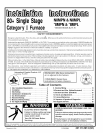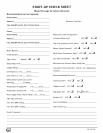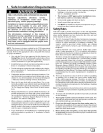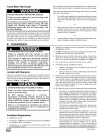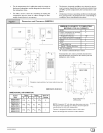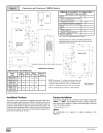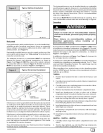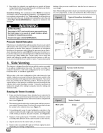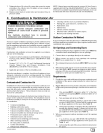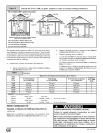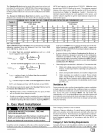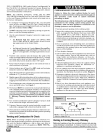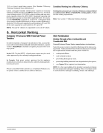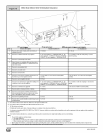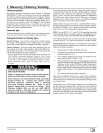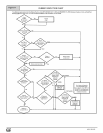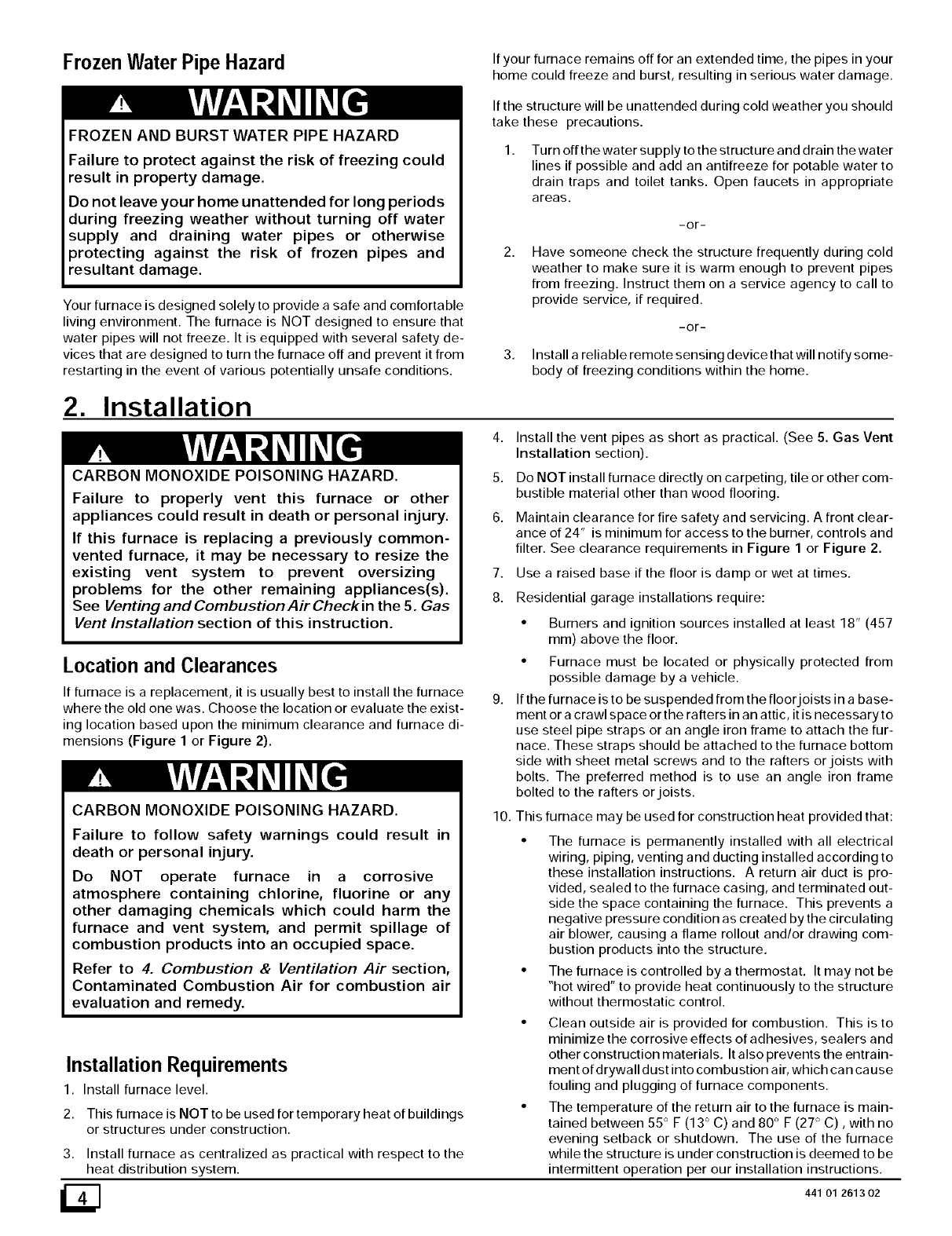
Frozen Water Pipe Hazard Ifyourfurnace remains off for an extended time, the pipes in your
home could freeze and burst, resulting in serious water damage.
FROZEN AND BURST WATER PIPE HAZARD
Failure to protect against the risk of freezing could
result in property damage.
Do not leave your home unattended for long periods
during freezing weather without turning off water
supply and draining water pipes or otherwise
)rotecting against the risk of frozen pipes and
resultant damage.
Your furnace is designed solely to provide a safe and comfortable
living environment. The furnace is NOT designed to ensure that
water pipes will not freeze. It is equipped with several safety de-
vices that are designed to turn the furnace off and prevent it from
restarting in the event of various potentially unsafe conditions.
If the structure will be unattended during cold weather you should
take these precautions.
Turn off the water supply to the structure and drain the water
lines if possible and add an antifreeze for potable water to
drain traps and toilet tanks. Open faucets in appropriate
areas.
-or-
Have someone check the structure frequently during cold
weather to make sure it is warm enough to prevent pipes
from freezing. Instruct them on a service agency to call to
provide service, if required.
-or-
3. Install a reliable remote sensing device that will notify some-
body of freezing conditions within the home.
2. Installation
CARBON MONOXIDE POISONING HAZARD.
Failure to properly vent this furnace or other
appliances could result in death or personal injury.
If this furnace is replacing a previously common-
vented furnace, it may be necessary to resize the
existing vent system to prevent oversizing
problems for the other remaining appliances(s).
See Venting and Combustion Air Check in the 5. Gas
Vent Installation section of this instruction.
Location and Clearances
If furnace is a replacement, it is usually best to install the furnace
where the old one was. Choose the location or evaluate the exist-
ing location based upon the minimum clearance and furnace di-
mensions (Figure 1 or Figure 2).
CARBON MONOXIDE POISONING HAZARD.
Failure to follow safety warnings could result in
death or personal injury.
Do NOT operate furnace in a corrosive
atmosphere containing chlorine, fluorine or any
other damaging chemicals which could harm the
furnace and vent system, and permit spillage of
combustion products into an occupied space.
Refer to 4. Combustion & Ventilation Air section,
Contaminated Combustion Air for combustion air
evaluation and remedy.
Installation Requirements
1. Install furnace level.
2. This furnace is NOT to be used for temporary heat of buildings
or structures under construction.
3. Install furnace as centralized as practical with respect to the
heat distribution system.
4. Install the vent pipes as short as practical. (See 5. Gas Vent
Installation section).
5. Do NOT install furnace directly on carpeting, tile or other com-
bustible material other than wood flooring.
6. Maintain clearance for fire safety and servicing. A front clear-
ance of 24" is minimum for access to the burner, controls and
filter. See clearance requirements in Figure 1 or Figure 2.
7. Use a raised base if the floor is damp or wet at times.
8. Residential garage installations require:
• Burners and ignition sources installed at least 18" (457
mm) above the floor.
• Furnace must be located or physically protected from
possible damage by a vehicle.
If the furnace is to be suspended from the floor joists in a base-
ment or a crawl space or the rafters in an attic, it is necessary to
use steel pipe straps or an angle iron frame to attach the fur-
nace. These straps should be attached to the furnace bottom
side with sheet metal screws and to the rafters or joists with
bolts. The preferred method is to use an angle iron frame
bolted to the rafters or joists.
10. This furnace may be used for construction heat provided that:
• The furnace is permanently installed with all electrical
wiring, piping, venting and ducting installed according to
these installation instructions. A return air duct is pro-
vided, sealed to the furnace casing, and terminated out-
side the space containing the furnace. This prevents a
negative pressure condition as created by the circulating
air blower, causing a flame rollout and/or drawing com-
bustion products into the structure.
• The furnace is controlled by a thermostat. It may not be
"hot wired" to provide heat continuously to the structure
without thermostatic control.
• Clean outside air is provided for combustion. This is to
minimize the corrosive effects of adhesives, sealers and
other construction materials. It also prevents the entrain-
ment of drywall dust into combustion air, which ca n ca use
fouling and plugging of furnace components.
• The temperature of the return air to the furnace is main-
tained between 55 ° F (13 ° C) and 80 ° F (27 ° C), with no
evening setback or shutdown. The use of the furnace
while the structure is under construction is deemed to be
intermittent operation per our installation instructions.
441 01 261302



